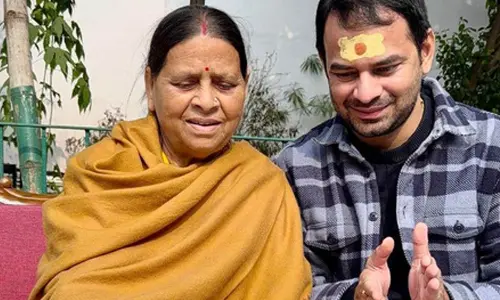How do police forensic experts probe a case?

How do police forensic experts probe a case?
A clandestine gravesite recovery expert explains
Perth: Recent high-profile missing persons cases, including that of William Tyrrell – who went missing in Kendall, New South Wales, at the age of three in 2014 – have focused public attention on the forensic practices involved in crime scene investigations. As a forensic scientist who has worked at thousands of homicide, sexual assault and serious crime scenes, I can tell you this process is not as straightforward as depicted on popular true crime shows. I research and teach forensic science at Murdoch University and specialise in cold-case techniques and clandestine gravesite recovery. Here's what typically happens behind the lines of police tape when forensic teams are at work.
The crucial first moments in the first moments after a major crime, what has happened is often a mystery. Like a scene from a painting, it's as if time stood still; many regular household items sit as they did before the violent event took place. Investigators take great care not to disturb the initial scene, lest valuable evidence be lost. The first task is to record everything as it appears in incredible detail – by video, photo and in written notes. Even items that may first appear innocuous can later take on new significance. This stage is vital; years later, this may be the only way cold-case teams can virtually revisit the scene to identify new clues.
The crime scene team works meticulously to identify and "field-test" items (meaning tests are done in situ) before securing them in bags. In some cases, that's by using chemicals and testing kits to identify body fluids or other traces associated with the crime. We also use some very high-tech torches that can emit a specific type to light to help us see otherwise invisible clues. This works a bit like the lighting in nightclubs that might expose lint on your black outfit. At this stage, the best crime scene examiners invoke the scientific method, proposing hypotheses as to what has happened, and then searching for evidence that may refute their suggestion.
Theories are presented and then ruled out in place of new theories as new evidence emerges. Testing for traces of blood, semen and other body fluids On the scene, forensic investigators have a suite of tools to help identify body fluids such as semen and blood. The Kastle–Meyer test, deployed to test for the possible presence of blood, has been used since the early 20th century. A chemical called phenolophthalin is dropped onto the suspected sample, followed quickly by a drop of hydrogen peroxide. These chemicals can detect the blood ingredient haemoglobin. If it rapidly turns pink, there's a good chance there's blood in the sample.
A different method called the acid phosphatase test, which can detect an enzyme secreted from the prostate gland, is used to identify the presence of semen. A prepared chemical is dropped onto a sample of the suspected stain; a colour change from clear to dark purple suggests the likely presence of semen. You may also have heard of investigators using luminol, which can detect old blood stains or traces a person has tried to scrub away. The investigator sprays luminol and other chemicals on a darkened area; a blue glow suggests traces of blood may be present. For all these tests, and everything we do as forensic investigators, meticulous records are kept about both observations and ideas.
There are many different types of specialist crime scene investigators, such as: fingerprint specialists, who use chemicals and powders to visualise fingerprints invisible to the naked eye and determine if they're good enough to compare with prints on a database bloodstain pattern analysis experts who, like Dexter from the eponymous crime show, observe the shape of blood droplets or marks in an effort to reconstruct a bloodshed scenario physical evidence comparison experts, who record evidence such as shoe impressions or tool marks to compare with objects at the scene (for example, was this screwdriver used to create that mark on a window frame?) ballistics and firearms experts, who identify and analyse evidence such as gunshot residues and fired bullets.
Outdoor scenes present extra challenges, as evidence can be damaged or destroyed by weather, wildlife and the landscape itself. Clandestine gravesites, however, can help preserve clues underground. It's not easy to find a hidden burial site; even a freshly dug gravesite, if done well, can be difficult to identify in an expansive bush scene. Investigators will be looking for areas where the ground looks disturbed or spots where vegetation has grown unusually lushly (caused by the decomposition of a body underneath). Investigators may also deploy cadaver dogs to search for human remains, or ground-penetrating radar, which uses radio waves to identify changes in the soil underground.
Once a grave is identified, even the sidewalls of the grave can offer clues about the type or shape of the shovel used to dig it. Layer by layer, we work down until we reveal the deceased person at the bottom of the grave. Utmost care is taken here, as repatriation of the remains to loved ones is a pivotal part of the process of gaining closure. Time is of the essence: All evidence has a life span. The sooner forensic scientists can identify and analyse a piece of evidence, the better the chances are of it producing a result. This can be one of the greatest challenges in a cold case, where a crime scene has been changed by the elements over many years. (The Conversation)














